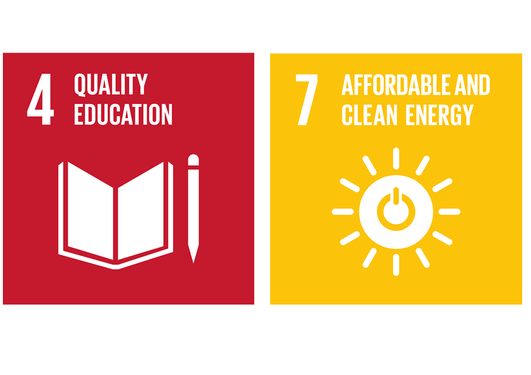Bibliometric services and analysis
The Bibliometrics group at the University of Bergen Library provides analyses and advice related to publishing activity, metrics and researcher visibility.
Main content
The Bibliometrics group at the University of Bergen Library provides analyses and advice related to publishing activity, metrics and researcher visibility. The group participates in UiB's "analysegruppe”, the BOA team, UiB Ferd, and national fora about bibliometrics.
- Analyses and data: We carry out tailored analyses on request and according to capacity (see "Analyses and services" below for a description of what we can do). We can provide analyses, data extracts, reports, or contributions to research articles.
- UiB statistics: On our webpage about UiBs publishing statistics we have analyses of publishing at UiB, its faculties and institutes. This includes trends over time, national and international cooperation, open access, and subject profiles.
- Courses and advice: We provide courses and advice about publishing strategy, profiles and visibility. We also provide guidance on updating publication lists and finding metrics for applications and reports (see our guide, Profiles and Publishing statistics, on MittUiB).
Contact us if you have questions related to publishing activity at UiB, need help with your own analysis, or advice about publishing statistics.
Below you can find an overview of typical anlyses we can assist with. In the bottom tab you can read the library’s principles for responsible use of bibliometrics.
Analyses and services
Some examples of analyses can be found below. Note that a bibliometric analysis should not be used in a simplistic way to draw conclusions about scientific quality; however, when used appropriately, it can contribute to understanding trends or informing strategic decisions. Examples of recent analyses:
Bibliometric mapping of publications on specific themes. We have done analyses of research related to the SDGs, UiBs priority areas, and the pandemic (see the report here), as well as topics requested by researchers and administrative staff, e.g. plastics, music therapy, and medical education (see the research article here).
Trends in co-publishing between UiB/faculties/institutes and other institutions/countries (e.g. co-publications with authors/institutions in Latin America).
Citation analyses, such as finding highly cited publications, or co-citation networks
Mentions of publications in policy documents, patents or news stories (also known as alternative metrics)
Finding publications and "impact" statistics (e.g. number of citations, views/mentions, news stories etc.) for projects/funders
Publishing activity by type of position, gender etc.
We can also provide some support for applications and proposals, such as finding statistics to document publishing activity, productivity and impact. To get started on this type of analysis yourself, see our guide Profiles and Publishing Statistics.
Contact us if you have questions related to publishing activity at UiB, need help with your own publication list, or advice on how to improve your visibility.
Principles for responsible use of bibliometrics at the University of Bergen Library
Bibliometric analysis is a quantitative method which is used to analyse research publications and their citations. These analyses can be used to map publishing activity for institutions and research environments, as well as reveal co-publishing relationships and give an indication of a publications impact.
The analyses are mainly based on national research information systems (CRIS - current research information systems) and international abstract and citation databases.
A bibliometric analysis should not replace peer-review or be used in a simplistic way to draw conclusions about scientific quality. However, when used appropriately, it can contribute when making strategic decisions and or during an evaluation process.
These guidelines therefore describe some priciples for responsible use of bibliometrics. These are built on national and international guidelines. The Bibliometrics group at the University Library uses these principles as a basis in their work.
Data quality and Reliability
- All data sources have their limitations. Ensure that limitations or challenges relating to the analysis and the data it is based on are clearly and openly stated. The data used for analysis should be chosen based on the goal of the analysis.
Openness and Transparency
- The data used for analysis should be made available when possible, taking into consideration of GDPR and practical limitations (e.g. dataset size).
- The persons who ordered the analysis should be consulted during the analysis. The aims of the analysis should be defined, and risk of inappropriate use should be minimised.
- As a rule, analyses should be carried out in consultation with those who are being evaluated, particularly in cases where results of the bibliometric analysis will be used as a basis for an evaluation.
Choice of indicators
- Take into account variations in publishing practices between different academic environments. Citation analyses can only be performed for academic environments/subject areas that have high coverage in available citation databases. Publications limited to national outreach/use and non-English language publications can be poorly represented in available data sources. This should be taken into account in any analysis/evaluation.
- Evaluate the size of the group to be analysed against the robustness/appropriateness of possible indicators. For example, publication points (norwegian system) should not be used for individual researchers or small groups.
- Avoid using indicators that are inappropiate for the goals or target group of the analysis. For example, journal bibliometric indicators (JIF, nivå) are appropriate for journals - not individual researchers, individual articles or small groups.
- When possible, prefer use of simple indicators over weighted and composite indicators. Composite indicators such as publication points (norwegian system) can obscure relationships between factors.
- Use more than one indicator to reveal different dimensions of the data, its context, and increase the robustness of the analysis.
